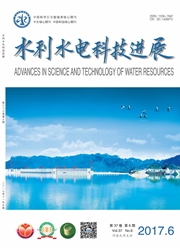

 中文摘要:
中文摘要:
通过趋势分析方法及突变点检验方法,分析大凌河流域水文气象要素的变化趋势;结合大凌河流域人类活特征及突变点分析结果,将流域径流量序列划分为“天然基准期"和“人类活动影响期"两个阶段;应用大凌河上游水文、气象、土地利用等数据建立大凌河上游水文模型,采用弹性系数法和水文模拟法定量分析大凌河上游流域气候变化和人类活动对径流的影响。结果表明:1956--2006年,大凌河流域降水量有轻微的上升趋势,而潜在蒸发量与径流量呈现显著下降趋势,导致径流量减小的主要原因为人类活动。
 英文摘要:
英文摘要:
Based on the trend analysis method and the change-point testing method, trends of the hydro-meteorological elements for the Daling River Basin were detected. The annual runoff time series was divided into a “natural period” and an “impacted period” based on the human activities characteristics and change point analysis results for the river basin. A hydrological model was established based on hydrological, meteorological, and land use data from the upper Daling River Basin. Through the elastic coefficient method and hydrological simulation method, the effects of climate change and human activities on runoff in the study area were analyzed quantitatively. The results show that the precipitation of the study area has been increasing slightly during 1956-2006, and the potential evapotranspiration and runoff show a significant decreasing trend, mainly due to human activities.
 同期刊论文项目
同期刊论文项目
 同项目期刊论文
同项目期刊论文
 期刊信息
期刊信息
